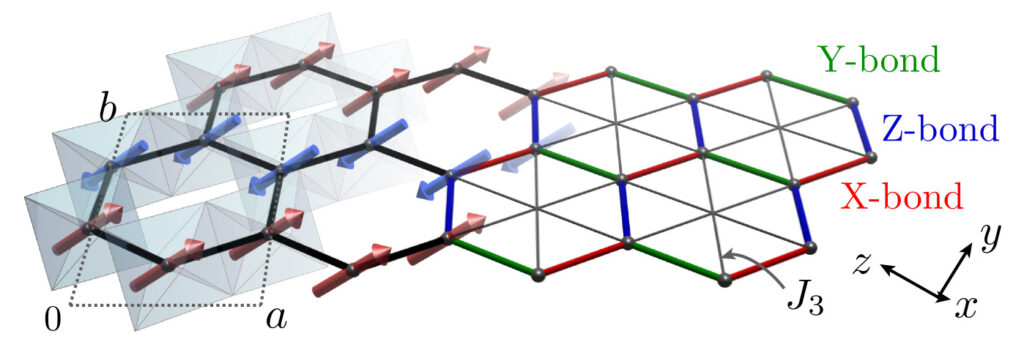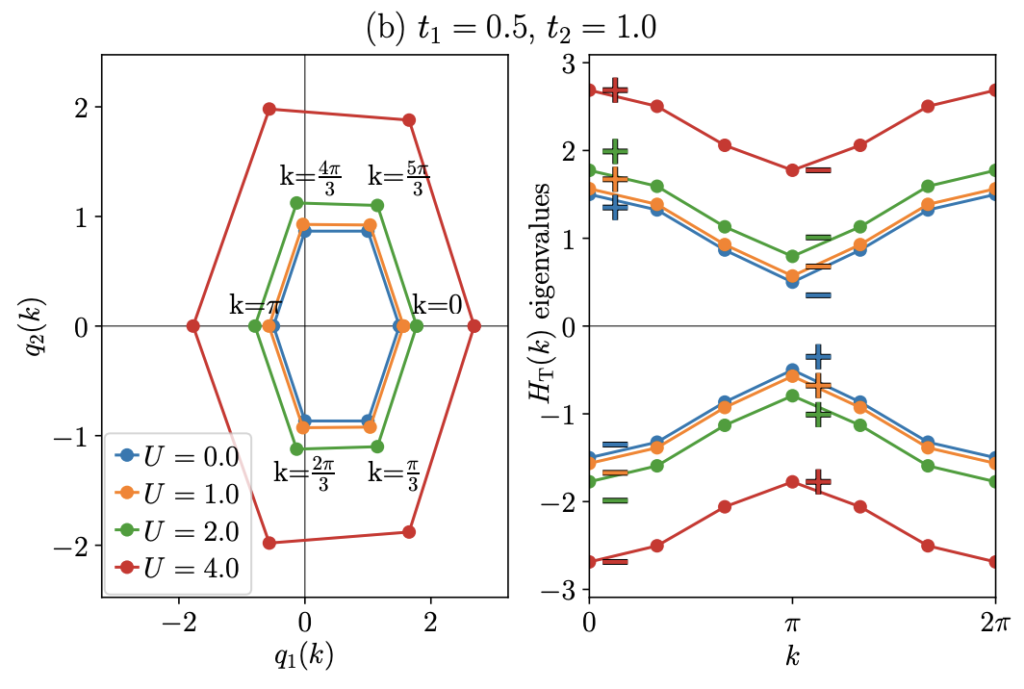Winter Research Group
Condensed Matter Theory
Publications
For a (usually) up-to-date list of publications, see Google Scholar page.
Research Themes
Quantum Magnetism


Quantum magnetism focuses on novel quantum states and phenomena in magnetic materials, where the degrees of freedom are local electronic spins (qubits) … the simplest quantum objects. When these spins interact with eachother, their collective behavior can give rise to Quantum Spin Liquid (QSL) ground states, in which the spins are not frozen into a classical order. Instead, they are characterized by the pattern of mutual quantum fluctuations. These states may host exotic excitations, with properties very different from the underlying electrons — and which may even give insight into the origin of particles in our own universe!
Motivating Questions:
– Which models can be realized in real materials? How do we engineer them?
– Which magnetic phases are possible? What are the experimental signatures of such phases?
– Given a real material, which model describes it? How does this relate to experiments?
Selected Publications:
- Kira Riedl, Elena Gati, David Zielke, Steffi Hartmann, Oleg M. Vyaselev, Nataliya D. Kushch, Harald O. Jeschke, Michael Lang, Roser Valentí, Mark V. Kartsovnik, Stephen M. Winter. “Spin Vortex Crystal Order in Organic Triangular Lattice Compound.” Physical Review Letters 127.14 (2021): 147204.
- Kira Riedl, Roser Valentí, and Stephen M. Winter. “Critical spin liquid versus valence-bond glass in a triangular-lattice organic antiferromagnet.” Nature Communications 10.1 (2019): 1-9.
- Stephen M. Winter, Kira Riedl, Pavel A. Maksimov, Alexander L. Chernyshev, Andreas Honecker, and Roser Valentí. “Breakdown of magnons in a strongly spin-orbital coupled magnet.” Nature Communications 8, no. 1 (2017): 1-8.
Topology + Correlations

Topological phases of matter are distinguished by non-local paremeters reflecting the underlying quantum nature of the state. For weakly interacting electrons, topologically non-trivial phases are those where the specific symmetries and character of the electronic states in reciprocal space prevent the bands from being smoothly deformed to a trivial atomic limit. Such materials are being developed both for fundamental studies and for potential electronics applications. However, an important fundamental question is to how to extend these ideas to include electron-electron interactions in real materials, which induce a finite lifetime for the electrons such that well-defined bands no longer exist.
Motivating Questions:
– Can non-interacting topological classifications remain meaningful in interacting systems?
– Do frameworks exist for diagnosing the topology of interacting Hilbert spaces?
– What implications do these concepts have for real materials and experiments?
Selected Publications:
- Dominik Lessnich, Stephen M. Winter, Mikel Iraola, Maia G. Vergniory, and Roser Valentí Physical Review B 104 (2021): 085116.
